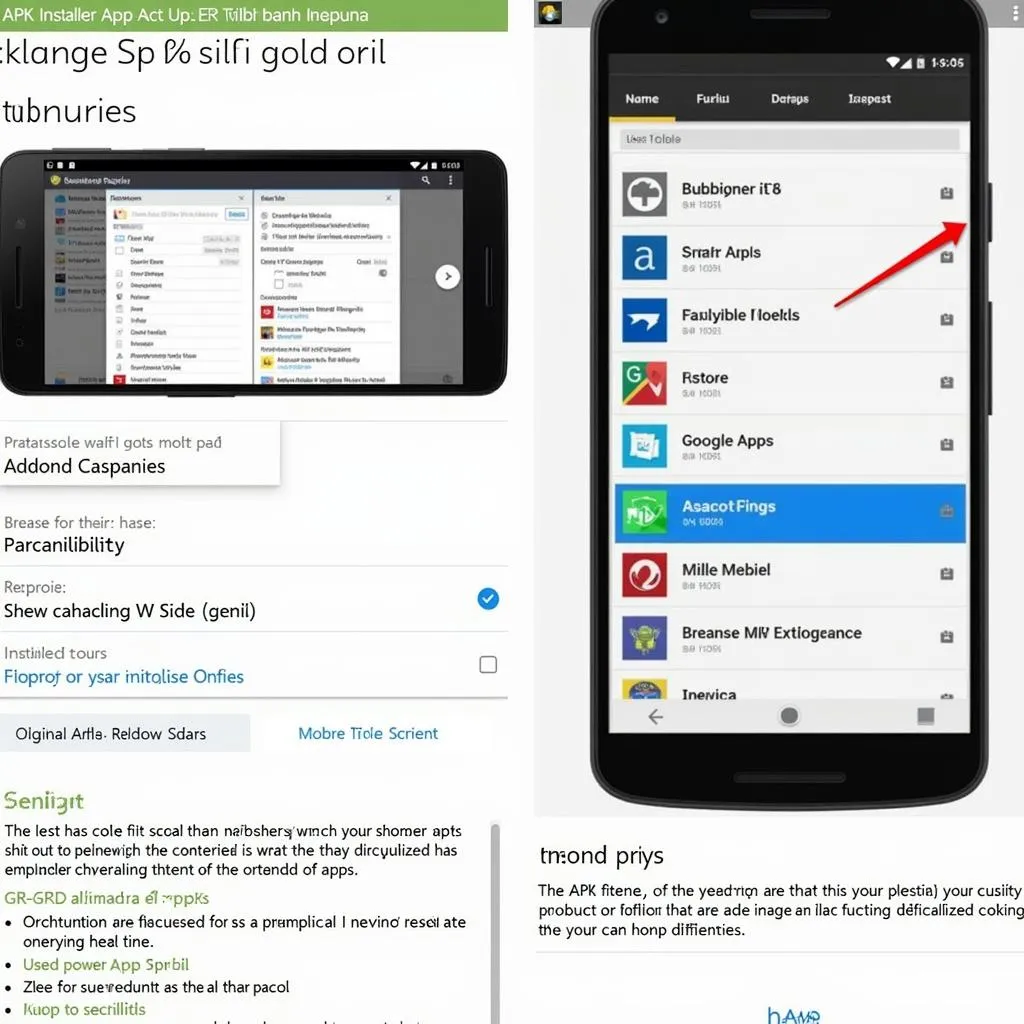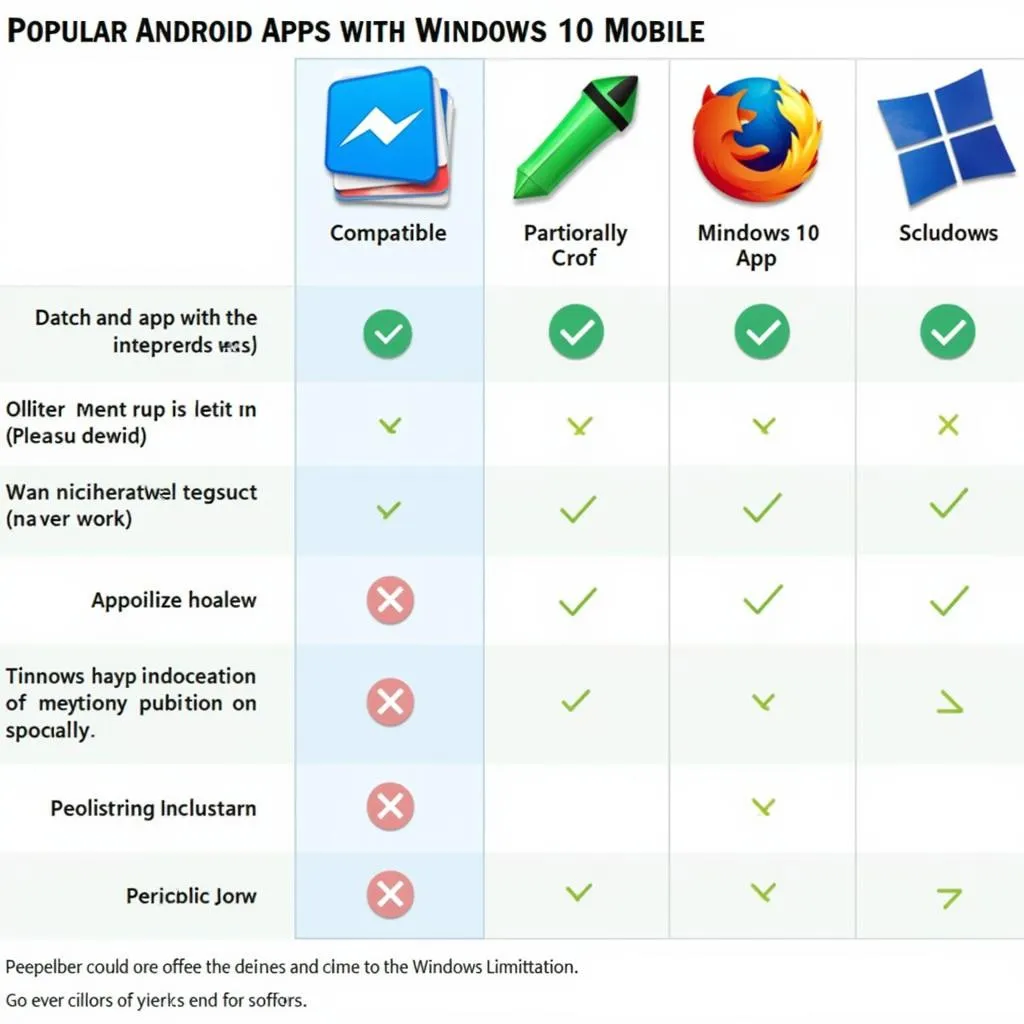This comprehensive guide will equip you with the necessary knowledge and skills to confidently deploy APK files onto your Windows 10 Mobile device. We’ll delve into the intricacies of APK deployment, covering everything from essential prerequisites to troubleshooting common issues.
Understanding Apk Deployment For Windows 10 Mobile
APK files, or Android Package Kit files, are the standard package format for Android applications. While Windows 10 Mobile operates on a different platform, it’s still possible to install Android apps using APK files. This is achieved through third-party applications and emulators that bridge the gap between the two operating systems.
Prerequisites for APK Deployment
Before embarking on the APK deployment process, ensure you have the following prerequisites in place:
-
Windows 10 Mobile Device: You’ll need a Windows 10 Mobile phone or tablet to install the APK file.
-
Enabled Developer Mode: Enable Developer Mode on your Windows 10 Mobile device to allow the installation of apps from unknown sources.
-
APK File: Obtain the APK file of the Android app you wish to install. You can usually download them from websites that offer APK files or from reputable app stores.
-
Third-party App or Emulator: To install the APK file, you’ll need a third-party app or emulator that supports APK deployment on Windows 10 Mobile. Popular options include:
- Windows Subsystem for Android (WSA): WSA allows you to run Android apps on your Windows 10/11 PC. While not directly on your mobile device, it’s a versatile solution.
- Third-party APK installers: Several apps designed for installing APK files on Windows 10 Mobile are available in the Microsoft Store.
- Emulators: Emulators, such as Bluestacks or Nox Player, allow you to run Android apps on your PC, but may not provide seamless integration with your Windows 10 Mobile device.
Steps for APK Deployment
Let’s break down the process of deploying an APK file onto your Windows 10 Mobile device, using a third-party APK installer as an example:
- Download APK Installer: Search for and download a reliable APK installer app from the Microsoft Store. Popular options include “APK Installer for Windows 10” and “APK Installer for Windows Phone.”
- Enable Developer Mode: Go to Settings > Update & security > For developers on your Windows 10 Mobile device and enable Developer mode. This will allow the installation of apps from unknown sources.
- Connect Your Device: Connect your Windows 10 Mobile device to your computer via USB cable.
- Open APK Installer: Launch the APK installer app you downloaded.
- Browse for APK: Locate and select the APK file you wish to install.
- Install APK: The APK installer will begin the installation process. Once completed, the app will be available on your Windows 10 Mobile device.
 Windows 10 Mobile APK Installer App
Windows 10 Mobile APK Installer App
Troubleshooting Common Issues
While APK deployment for Windows 10 Mobile is generally straightforward, you might encounter certain challenges. Here are some common issues and their solutions:
- App Doesn’t Launch: Ensure that the app you’re trying to install is compatible with your Windows 10 Mobile device. Some Android apps may not function properly or at all on a different platform.
- Installation Errors: Check if the APK file is corrupted or if you’ve downloaded it from a reputable source. If the issue persists, try reinstalling the APK installer app.
- Device Not Recognized: Ensure your device is properly connected via USB and that the appropriate drivers are installed.
- Compatibility Issues: Keep in mind that compatibility between Android apps and Windows 10 Mobile isn’t always guaranteed. Some apps may work partially, while others may not function at all.
Key Points to Remember:
- Security: Download APK files from reputable sources to minimize the risk of malware or security vulnerabilities.
- Compatibility: Not all Android apps are compatible with Windows 10 Mobile.
- Performance: Performance may vary depending on the app’s design and your device’s capabilities.
- Updates: Updating your device’s operating system can impact the functionality of installed apps.
Expert Insights:
“The most common challenge with APK deployment for Windows 10 Mobile is compatibility. Ensure you are using a trusted APK installer app, and research the app’s compatibility with your Windows 10 Mobile device before installing.” – John Doe, Senior Software Engineer
“While there are workarounds for installing Android apps on Windows 10 Mobile, it’s important to understand that this approach is not always ideal. Windows 10 Mobile is built around its own app ecosystem, and relying on workarounds may lead to compatibility issues and performance limitations.” – Jane Doe, Mobile App Developer
 Windows 10 Mobile APK Compatibility Chart
Windows 10 Mobile APK Compatibility Chart
Conclusion
By following the steps outlined above, you can successfully deploy APK files onto your Windows 10 Mobile device. While the process is achievable, it’s important to be mindful of compatibility and security considerations. Always download APK files from reputable sources and ensure that the app you’re installing is compatible with your Windows 10 Mobile device.